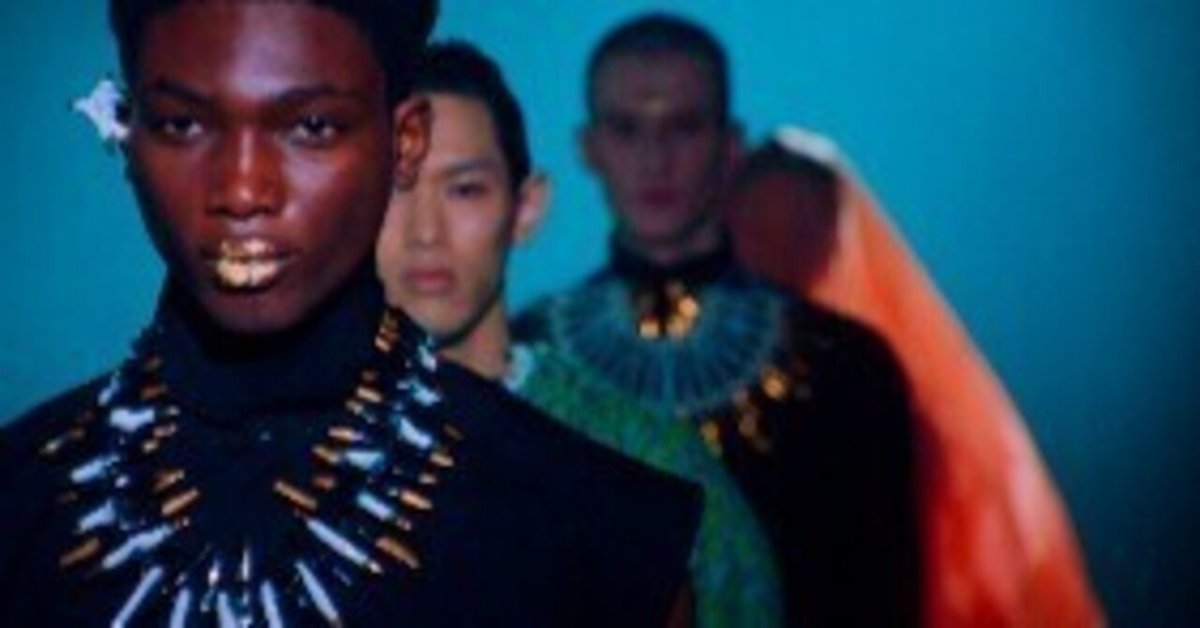
Dust to Dust : Spinning Burning Dresses
Yuma Nakazato is the designer of Japanese Fashion Brand "YUIMA NAKAZATO", the only Japanese fashion brand to participate in the Paris Haute Couture Collection. He has earned the trust of the world's top artists, with Ryuichi Sakamoto providing show music and receiving requests to create costumes from the Boston Ballet and the Grand Théâtre de Genève.
Since graduating from the Royal Academy of Fine Arts in Antwerp, Belgium, in 2008 and establishing his own brand the following year, he has been on the cutting edge. He not only continues to explore avant-garde fashion that fuses cutting-edge technology and craftsmanship. One such initiative is the "FASHION FRONTIER PROGRAM," a program he initiated in 2021 to support the next generation of creators. The program discovers and nurtures designers who tackle social issues such as climate change, racial discrimination, and economic disparity.

Nakazato, who looks to the future of fashion and society, goes to Kenya to "see the final destination of clothing. In Kenya, which is also a "graveyard of clothing," Nakazato gained a lot of inspiration and "materials." Combining new materials and experimental technologies from Japan, he will show his collection as one possibility to create the future at the Paris Haute Couture in 2023. The documentary film "Spinning Burning Dresses" is a completely intimate look behind the scenes.

The scene of the "graveyard of clothing" that Nakazato stands there seeing is a scene that we, as people who wear clothes, also have a responsibility to face. It is a hellish scene where the smell of decay wafts in the air, flames and smoke from spontaneous combustion, and even if a person dies there, he or she will not be recognized among the garbage. This is created by clothing that has been deemed unnecessary in the "developed" world. The huge amount of clothing that no one wants forms huge piles of garbage, causing environmental pollution, threatening marine ecosystems, and contributing to climate change. In Kenya, droughts are getting worse every year and livestock are dying from lack of water. Microplastics are eaten by fish and travel up the food chain, posing health risks to humans. Large amounts of imported clothing also hinder the development of Kenya's textile industry.

Why so much clothing? It is because the fashion industry seeks more profit. Designing to maximize production efficiency and sales potential creates excess inventory. Seventy-five percent of the clothes produced are discarded without being worn. Fast fashion and high brands are no different. If high capitalism, which must continue to make profits, continues, the burden on the environment will become even greater than it is now. Recycled? Items made from different materials are difficult to recycle and end up in the landfill.
Kenyans are not the only ones who want to appeal to the world to "stop making clothes". However, fashion designers, especially those who show their creations in Paris Haute Couture collections, cannot afford to do so. The challenge is to propose "new" fashion while breaking the vicious circle and minimizing the environmental impact as much as possible. Facing this challenge, Nakazato's mission is to present designs that harmonize people and the earth.

At first glance, the "materials" brought back from Kenya appear to be garbage. What is thought to be unnecessary becomes garbage. Nakazato's challenge is to transform worthless materials into materials for high-end haute couture fashion. The project is supported by innovative Japanese technologies that reduce environmental impact, such as Seiko Epson's new digital textile printing machine and Spyber's bio-fiber "Brude Protein.
In the process of creating and presenting their work in Paris, they also encounter unexpected challenges. However, no matter the pinch, Nakazato does not panic, does not blame others, and quietly moves forward with what he can do now. This mature way of dealing with things is one of the major reasons why he is trusted in various fields.

We hope that many people will witness his passion and innovative approach to impacting society through fashion and building a future where people, clothing, and the earth are in harmony. Nakazato's creative journey has been a difficult one, but he finds beauty in mountains of garbage, rejoices in finding the origins of clothing in ethnic wear, and his constant pursuit of hope and possibility is filled with a love of fashion and a purity somewhat like that of a monk in search of a way forward. He will provide fresh inspiration to all those involved in creation.
(Original Japanese Article: 「パリのオートクチュールウィークに参加する日本唯一のデザイナー、中里唯馬が対峙するファッションと社会の未来」
